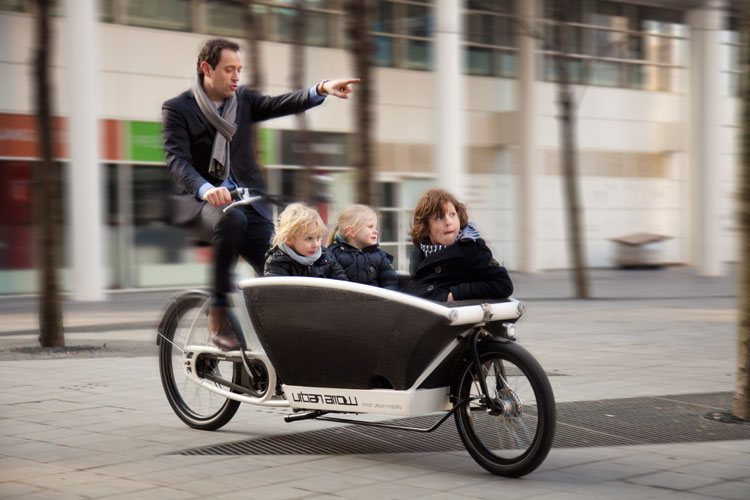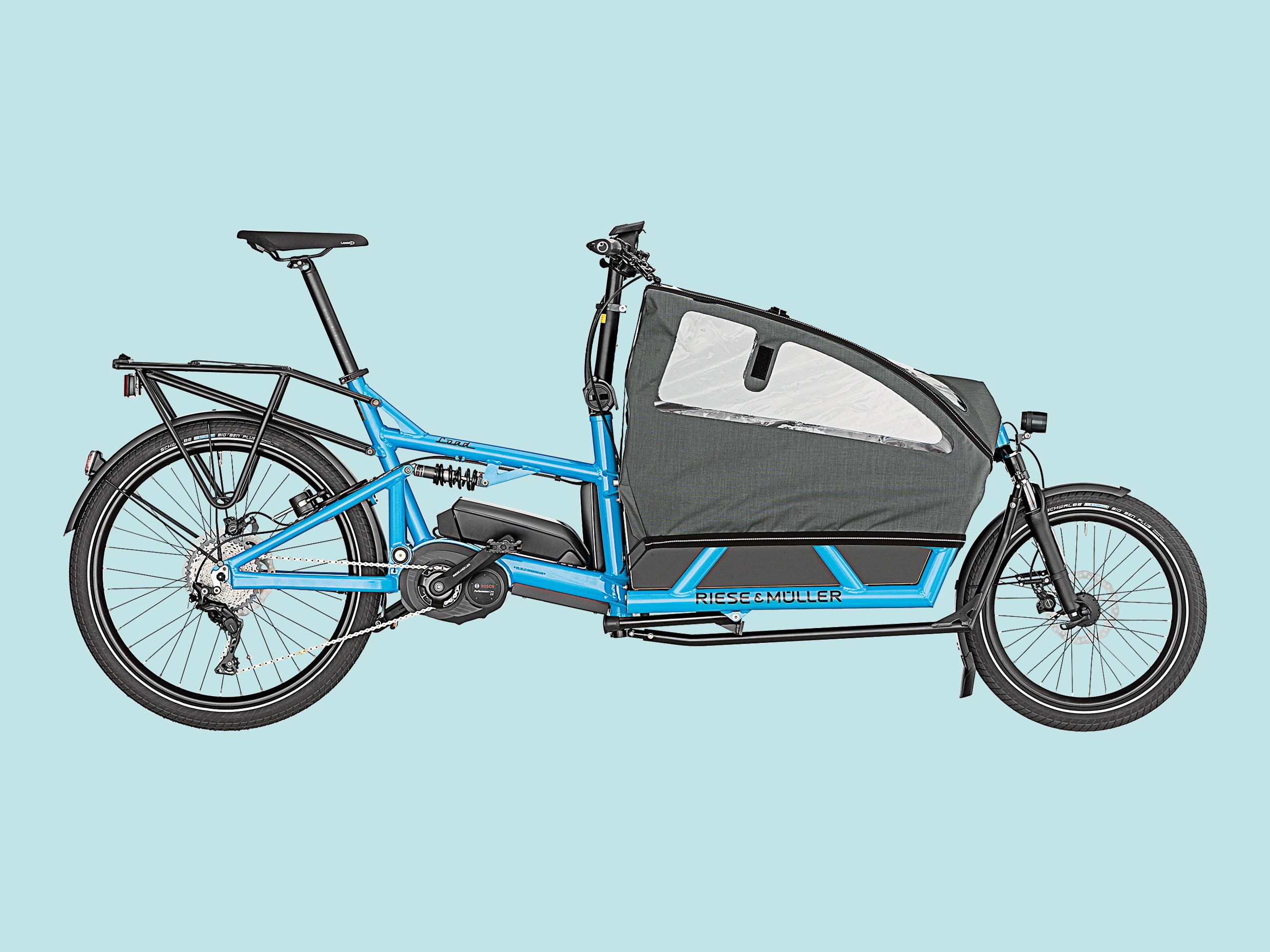I am stuck in a design-hell loop, over here, and I hope that maybe one or twelve of you fine folks could sound off and give me some fresh knowledgeable opinions to chew on. I have never built an e-bike, but I have done a bit of robot-hacking, so I am not wholly ignorant of electric motors and controllers.
I want to build a big bike trailer to move two kids, or keg-weight cargo. The trailer design is something I feel pretty good about, and have sketched out some possibilities. I have some hitch ideas that look doable, and commercial hitch backup plans if my own ideas don't work out. But one of the kids is getting awfully heavy (not keg-weight by himself, but maybe both of 'em together might match a keg), so I want to add some electric assist to get them to school on time and myself to the office without being drenched in sweat. I would wind up getting a bike-camping trailer as a side benefit.
Problem is, I can't decide where to put said assist. I've been going back and forth between pusher-trailer and rear hub motor for weeks, now. Cost is my main limitation, here, and one of the reasons that I am leaning in the pusher-trailer direction is that it would be much easier for me to scrounge up a brushless motor and a controller for trailer-mounting than it would be for me to either afford a hub motor kit, or to fab up a waterproof mid-drive. I mention "waterproof" because I live in Portland, and this is supposed to be a wet-weather commuter. The trailer is inspired by velomobiles, b/c the kids know that I am obsessed with Coroplast fairings for velomobiles, and they both like the idea of reclining in comfy chairs under an insulated Coroplast fairing while they, I dunno, watch Pokemon and drink hot apple cider.
I have next to no metal-fab expertise, so making my own waterproof mid-drive out of a scavenged motor and homebuilt parts strikes me as unlikely. However, making a waterproof Coroplast fairing on top of a Bikes-At-Work-clone cargo trailer sounds easy, and that would leave me with a dry, insulated place to put my scavenged electric motor drivetrain. (And kids.) I can also mount A Lot More Battery in a nine-foot-long trailer than I can in the frame triangle of my tourer or MTB. On the other hand, a commercial hub drive is probably easier and ostensibly more reliable than whatever I can put together out of repurposed forklift motors and a cheap Chinese controller. (Also, I could leave the empty trailer at school all day long and not worry about some enterprising person boosting a lithium battery out of my velotrailer.)
Few of the hub motor kits I've looked at mention ingress protection, and I don't think that I want to commute in Portland rain without an IP67 rated drivetrain. Are these things dry-weather tools? (Toys?) I also gather that the average Ebay hub-motor kit is not to be trusted, and need to be pointed to some reliable and trustworthy North American vendors of same so I can do my cost comparison.
Lastly, my commute is mostly flat with only one real hill, but if I build this trailer at all, then myself and the five-year-old are going to want to ride it over the Coast Range. So I don't need to build regenerative braking in at the outset, but it will be pretty mandatory for its intended summer use.
So: I suspect that some of you have tried both hub motors and pusher-trailers, right? What elements am I missing in my cost-benefit analysis? I must be overlooking at least one major something.
I want to build a big bike trailer to move two kids, or keg-weight cargo. The trailer design is something I feel pretty good about, and have sketched out some possibilities. I have some hitch ideas that look doable, and commercial hitch backup plans if my own ideas don't work out. But one of the kids is getting awfully heavy (not keg-weight by himself, but maybe both of 'em together might match a keg), so I want to add some electric assist to get them to school on time and myself to the office without being drenched in sweat. I would wind up getting a bike-camping trailer as a side benefit.
Problem is, I can't decide where to put said assist. I've been going back and forth between pusher-trailer and rear hub motor for weeks, now. Cost is my main limitation, here, and one of the reasons that I am leaning in the pusher-trailer direction is that it would be much easier for me to scrounge up a brushless motor and a controller for trailer-mounting than it would be for me to either afford a hub motor kit, or to fab up a waterproof mid-drive. I mention "waterproof" because I live in Portland, and this is supposed to be a wet-weather commuter. The trailer is inspired by velomobiles, b/c the kids know that I am obsessed with Coroplast fairings for velomobiles, and they both like the idea of reclining in comfy chairs under an insulated Coroplast fairing while they, I dunno, watch Pokemon and drink hot apple cider.
I have next to no metal-fab expertise, so making my own waterproof mid-drive out of a scavenged motor and homebuilt parts strikes me as unlikely. However, making a waterproof Coroplast fairing on top of a Bikes-At-Work-clone cargo trailer sounds easy, and that would leave me with a dry, insulated place to put my scavenged electric motor drivetrain. (And kids.) I can also mount A Lot More Battery in a nine-foot-long trailer than I can in the frame triangle of my tourer or MTB. On the other hand, a commercial hub drive is probably easier and ostensibly more reliable than whatever I can put together out of repurposed forklift motors and a cheap Chinese controller. (Also, I could leave the empty trailer at school all day long and not worry about some enterprising person boosting a lithium battery out of my velotrailer.)
Few of the hub motor kits I've looked at mention ingress protection, and I don't think that I want to commute in Portland rain without an IP67 rated drivetrain. Are these things dry-weather tools? (Toys?) I also gather that the average Ebay hub-motor kit is not to be trusted, and need to be pointed to some reliable and trustworthy North American vendors of same so I can do my cost comparison.
Lastly, my commute is mostly flat with only one real hill, but if I build this trailer at all, then myself and the five-year-old are going to want to ride it over the Coast Range. So I don't need to build regenerative braking in at the outset, but it will be pretty mandatory for its intended summer use.
So: I suspect that some of you have tried both hub motors and pusher-trailers, right? What elements am I missing in my cost-benefit analysis? I must be overlooking at least one major something.



